The Best Books and Movies About Americans in Europe (to Replace the Trip to Europe You Can’t Go On This Year)
One thing I will very much miss this summer is going on a summer vacation. I’m fairly certain I’m not alone. Growing up, we’d go on two road trips in my home state of California—one, to the eastern Sierras; the other, to the western Sierras. I loved those trips, but eighteen summers of California mountains with slightly different light didn’t provide the width of experience I was ready for by the time I graduated from high school. Then, that summer before college, as many teenage Americans had done before me, I went to Europe for the first time.
That trip changed me. Not just because it was my first trip abroad. But because it introduced me to an idea that was pervasive not just in life, but in so many books and films I admired: the American in Europe—on vacation or at war, in pleasure or in crisis. For at least one week a year since that first trip at 18, I’ve found a way to make it back. I’ve stayed in grimy hostels, in rooms of thirty-six backpackers. I’ve slept (and been robbed) on sleeper trains. I’ve stayed in countless Airbnbs and the occasional luxurious hotel. I’ve stayed with old friends and new friends and ex-girlfriends and current girlfriends and, eventually, my wife. I’ve fought with friends. I’ve been party to relationships dissolving in real time. I’ve also had my share of very good times. Visiting Europe—for me, and a lot of characters in a lot of the books and movies below—became a way to get away from America for a minute, to be a new or different version of oneself, or at least the same version in a different context.
One of the things I like to do while visiting Europe is to read and write. I’ve read a lot of these books on trips there, and written the bulk of two novels—including a new one, out this week, about this very subject: Americans in Europe. In the case of my novel, it’s a pod of four—a couple with deep stress fractures, plus two strangers they meet while trapped in Barcelona when the ashcloud from an Icelandic volcano seals off all ins and outs and forces the four to pair and re-pair and reckon with the problems they’d hoped to leave behind in Europe.
Americans in Europe is one of the great specific genres in American lit—and I hope this new book of mine is a worthy contribution to that shelf of fiction. Since we won’t be going on any trips of our own this summer, consider picking up Barcelona Days, as well as any others from this list here—the books and movies that inspired, in ways small and large, my book, and will, guaranteed, provide you with an illusion of that trip abroad you won’t be taking this year.
Where to start?
For me, it’s with James Salter. Salter spanned a couple generations of great American writers, without becoming as well-known as some. He flew fighter planes in Korea, then returned to the U.S., but spent a considerable amount of time in Europe, living life and taking notes. I recommend in particular the novels A Sport and a Pastime and Solo Faces, and the short story “Am Strande Von Tange.” A Sport and a Pastime—a slim sex-filled voyeuristic novel about one American watching another American indulge in an affair in France—is the best known of the trio, in part because many of Salter’s contemporaries revered it. (Reynolds Price called it “as nearly perfect as any fiction I know.”) “Am Strande Von Tange” is a brief little escapade in Barcelona, as rich with transporting detail as anything I’ve read (“the wide, tree-cool avenues”; “the white silence...Sunday morning, the early morning of Spain”). But I’m gonna point you to the lesser-known Solo Faces first. Salter wrote this novel about an American mountain climber in the French Alps first as a screenplay, as a follow-up to his successful collaboration with Robert Redford on the film Downhill Racer (another American in Europe; Redford as a competitive skier on the World Cup circuit). Salter imagined Redford in the lead role, but when development stalled out, he transformed the story into a new novel. Lucky us. What you get then is a movie plot, with the novelist’s detail of living through the seasons in the foothills of the Alps and climbing the sheer faces of the most majestic mountains in Europe.
As with so much of what James Baldwin wrote when he wrote it, Giovanni’s Room is worth revisiting again and again. A gay romance in Paris in the ‘50s, published in 1956? Besides what it meant for the conversation about love and sex represented in mainstream literature, it’s just a jewel-cut little piece of perfection on its own terms. It’s sorrowful, it’s longing, it’s filled with equal parts darkness and light. Baldwin lived for much of his later life in the southern French town of St.-Paul-de-Vence, so it’s reasonable to consider him one of the foremost authorities on the matter of Americans in Europe. But this novel was early days still, and about first blush with Europe—about the ways Europe (particularly a bygone Paris) could change you, and reveal to you your truest self.
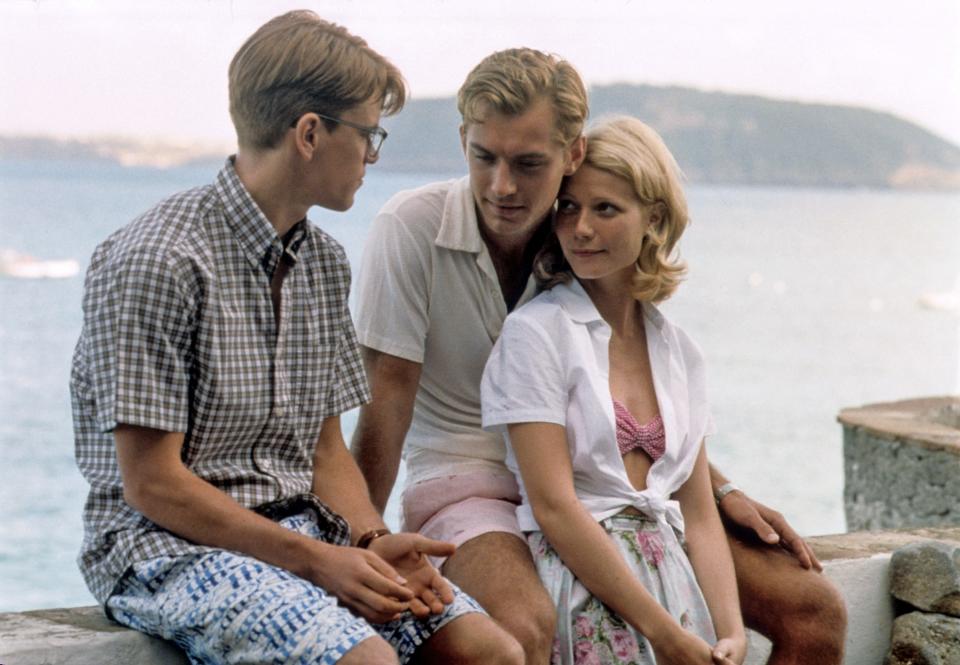
MSDTAMR EC038
Oh man, Tom Ripley. The greatest of all the American psychopaths to indulge in a little European r&r (&murder). If you’ve only seen the luminous Anthony Minghella film of The Talented Mr. Ripley (that captured all four of its stars—Matt Damon, Jude Law, Gwyneth Paltrow, and Philip Seymour Hoffman—at their most follicled and sun-kissed), do yourself a favor and go straight to the origin point. Patricia Highsmith is one of the inimitable great gifts of all American writing—but particularly the genre of Americans in Europe. And Ripley the First, followed by all four sequel novels in the “Ripliad,” are among the most twistedly entertaining and crisply psychological books I’ve ever read. Book or film version, just get yourself to an Italian seaside town with cold water and a rentable rowboat.
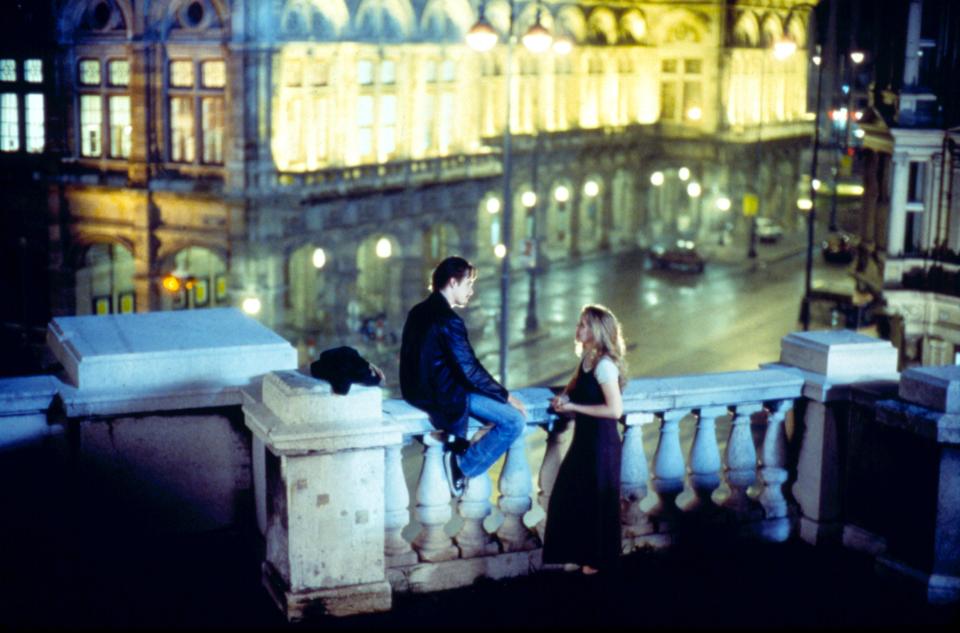
BEFORE SUNRISE, Julie Delpy, Ethan Hawke, 1995
Richard Linklater, Julie Delpy, and Ethan Hawke’s ongoing saga about a single couple (American man, French woman) is the nearest representation, I’d imagine, to the version of visiting Europe most of us have experienced ourselves. (More familiar, at least, than Ripley’s escapades.) Walking around with someone we’ve just met, or someone we’ve just re-met, or someone we’ve spent a decade growing apart from (Jesse and Celeste, in all three cases), stopping only to lie in the grass or snack on some olives, all while conducting one extended conversation on...what, exactly? How a person should live a life? How a person can love another person? Before Sunrise (Vienna, 1995), Before Sunset (Paris, 2004), and Before Midnight (Greece, 2013) describe the arc of a relationship of a very specific couple, and yet the feelings of attraction, repulsion, desire, aggravation, and most other universal human emotions are utterly palpable. As I write this, I’m realizing that these films are possibly more influential on my book (and life) than any of the others here. Fingers crossed for a ‘Before 4.’
Djuna Barnes’s Nightwood is a 1930s romance of sorts set in seedy Paris, and Berlin and Vienna of the interwar years. Stylishly modern and influentially Modernist. More ideas about love and relationships between humans than obvious plotting. There's a casualness (and cruelty) to the affairs between the magnetic Robin Vote and the women who serve as the other two points of their tricky love triangle. There's just a frankness and rich complication to the portrayals of those relationships (and the rest in this book, gay or straight) that must've, at the time, been starkly refreshing and controversial at once.
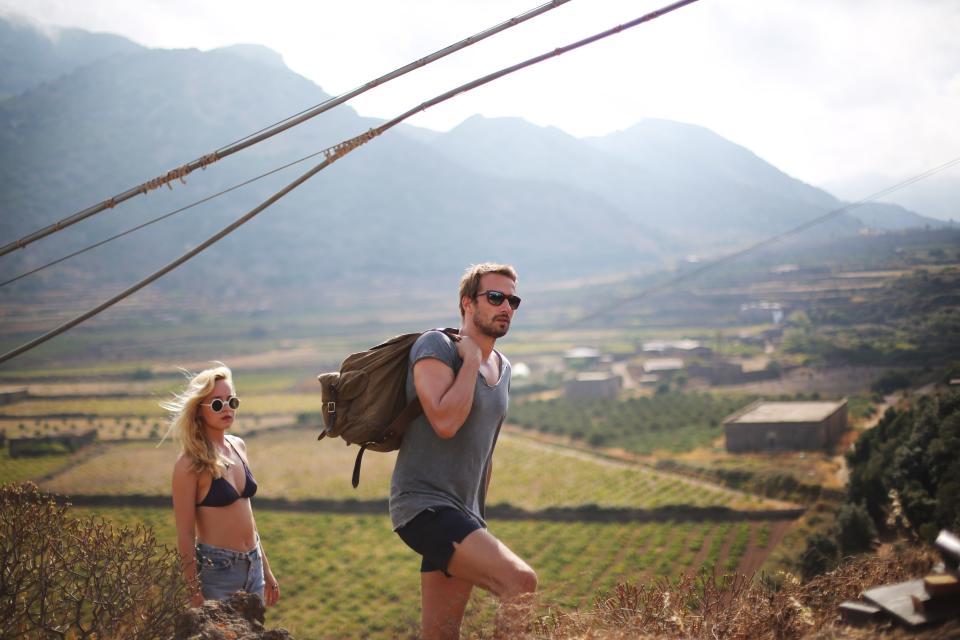
A BIGGER SPLASH, l-r: Dakota Johnson, Matthias Schoenaerts, 2015. ph: Jack English/TM and Copyright
A number of great novels in the genre hue closest to that of auto-fiction—novels that are (we assume) lightly fictionalized memoir, where the dramatics live in the subtle particulars of real experience. For some more recent examples I’ve been swept up in, check out Garth Greenwell’s What Belongs To You (an American English teacher's love affair in Bulgaria) or Ben Lerner’s Leaving the Atocha Station (a Fulbright fellow stumbling his way through Madrid) or Darryl Pinckney’s Black Deutschland (a gay black expat from Chicago in early-‘80s Berlin, inspired by Isherwood’s model from half a century earlier) or Caleb Crain’s Necessary Errors (a recent college grad in Prague in the rush of freedom following the Velvet Revolution). Further back, there’s Lynn Tillman’s Motion Sickness (an American writer skipping frenetically across the continent). And further back still there’s The Dud Avocado by Elaine Dundy (a 21-year-old’s fizzy adventures in late-1950s expat Paris). I’d jump back into any of these today and feel deeply, instantly, elsewhere.
If we were to play single-word-association game with Don DeLillo, we could do worse than “Americana”—not just the title of his first novel, but the subject in his crosshairs for a fifty-plus-year career. Only rarely do any of his Americans get to Europe, but when they do, holy cow, what a great and bizarro version of it they find. I love The Names—about some Americans living (and participating in various forms of shady business) in Athens in the early ‘80s; also about a language cult of some sort in Greece. If “language cult of some sort” doesn’t have you smashing that “Buy Now” button on Amazon, but you like the idea of spending some time in Greece, consider Lawrence Osborne’s Beautiful Animals instead. This 2017 novel is about two young women—an American and a Brit—who get in over their heads when they meet a Syrian refugee on the Greek island where they’re vacationing. It’s an ideal combo of pace and precision, when a literary novelist can still cook a plot.
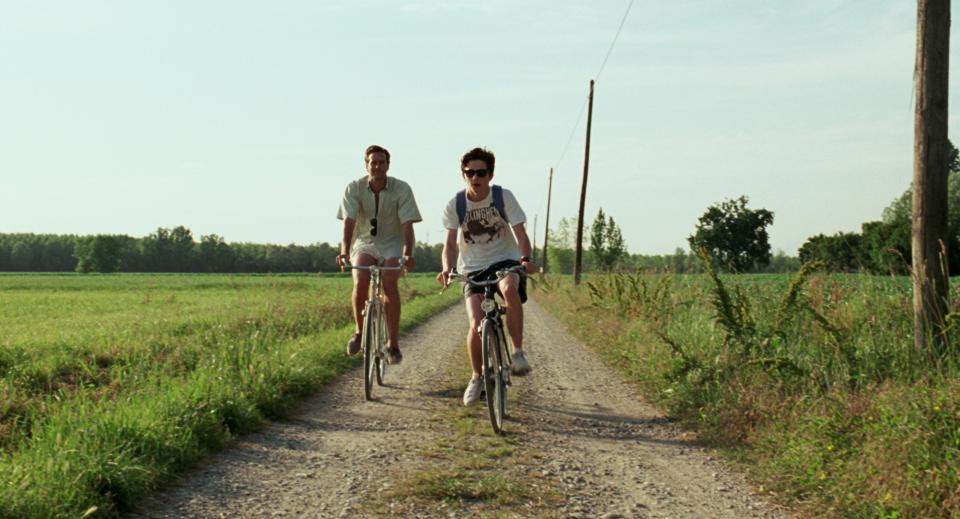
MCDCAME EC135
Italian director Luca Guadagnino has become an unlikely bard on the topic. Several of his films center on the experiences of Americans (or at least non-native English speakers) in strange European lands. Think of Elio and Oliver in Call Me My Your Name (based on the sensuous novel by Andre Aciman) or the young American played by Dakota Johnson in A Bigger Splash. (Nothing will zap your home-bound blues like this film, set on the Italian island of Pantelleria in the Mediterranean, and starring an epic quartet—Johnson, Tilda Swinton, Ralph Fiennes, Matthias Schoenaerts—and a centerpiece swimming pool). Or Suspiria—Johnson again, as an American at a ballet school in behind-the-wall Berlin. Or I Am Love—Swinton again, as an American married into Milanese royalty. Guadagnino’s current project, ostensibly set on an American military base in Italy, has him sticking to his (maybe unwittingly) favorite subject.
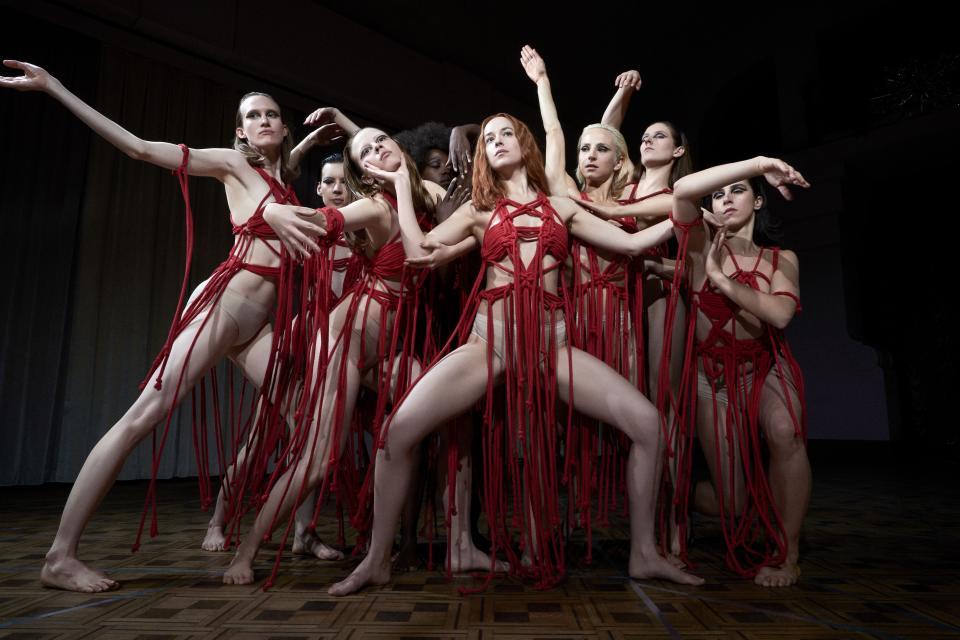
Suspiria
How about the olds? Hmm. You may have left Hemingway and Fitzgerald back in the fog of high school and never looked back. Or you may take issue with their antiquated ways in the world. But let me confess right here that I still really love most of this stuff. Caveat button fully engaged, consider their three most notable works in the genre: A Farewell to Arms (Hemingway’s World War I tragedy, set in Italy and Switzerland), The Sun Also Rises (a Lost Generation troupe’s romp through Paris and Pamplona and the Basque Country) and Tender Is the Night (Fitzgerald’s ode to the sea-coast in France and, I guess, sanitariums in Switzerland?).
Some other bits and bobs I can’t leave without mentioning:
The Vacationers: Escape of escapes. Emma Straub’s breezy novel about a family getaway to Mallorca, replete with salt and sun and properly-scaled drama, is the ultimate stand-in for your own trip.
Roman Holiday: Hell of a couple days for an American in Europe. Never gets old.
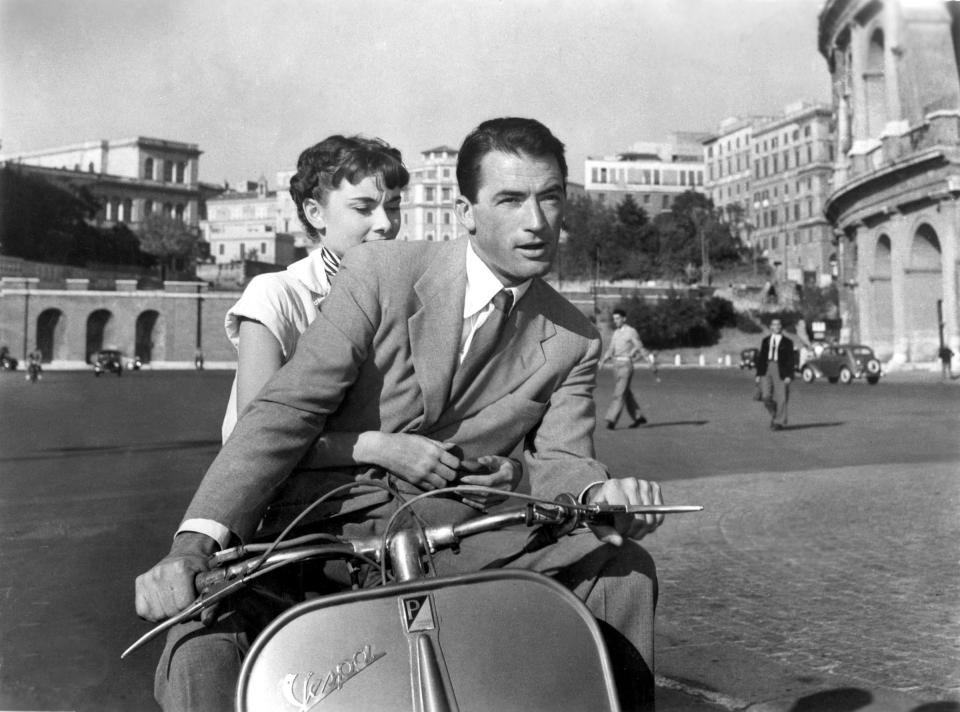
ROMAN HOLIDAY, Audrey Hepburn, Gregory Peck, 1953
Midsommar: The latest great entry on the list. Sun stays out all night, bear bodysuits go up in flames. Key learnings? Americans in northern Europe are extra susceptible to shit going sideways.
Some parts of novels I think about often from books that are primarily set elsewhere, but that swing their Americans through for short stays. I’m talking about the northern Italy of revolution in The Flamethrowers (Rachel Kushner); the Berlin of near-love in Less (Andrew Sean Greer); the Budapest and Hungarian countryside in The Idiot (Elif Batuman); the crime-y underbelly of Amsterdam in The Goldfinch (Donna Tartt); the prostitute-filled Vienna in The World According to Garp (John Irving) or the psychoanalyst-filled Vienna in Fear of Flying (Erica Jong); and the manic-depressive Honeymoon surge through Monaco in The Marriage Plot (Jeffrey Eugenides). Visit them!
There’s also a whole other category of Americans in Europe, nonfiction edition. It’s breaking the premise, and there are too many to list and too many I haven’t read, but here are some I’ve loved over the years by (bonus) favorite writers of mine who’ve written for GQ. Notes on a Foreign Country by Suzy Hansen. The Telling Room by Michael Paterniti. A Sense of Direction by Gideon Lewis-Kraus. Paris, I Love You But You’re Bringing Me Down by Rosecrans Baldwin. Eat, Pray, Love by Elizabeth Gilbert. Paris to the Moon by Adam Gopnik.
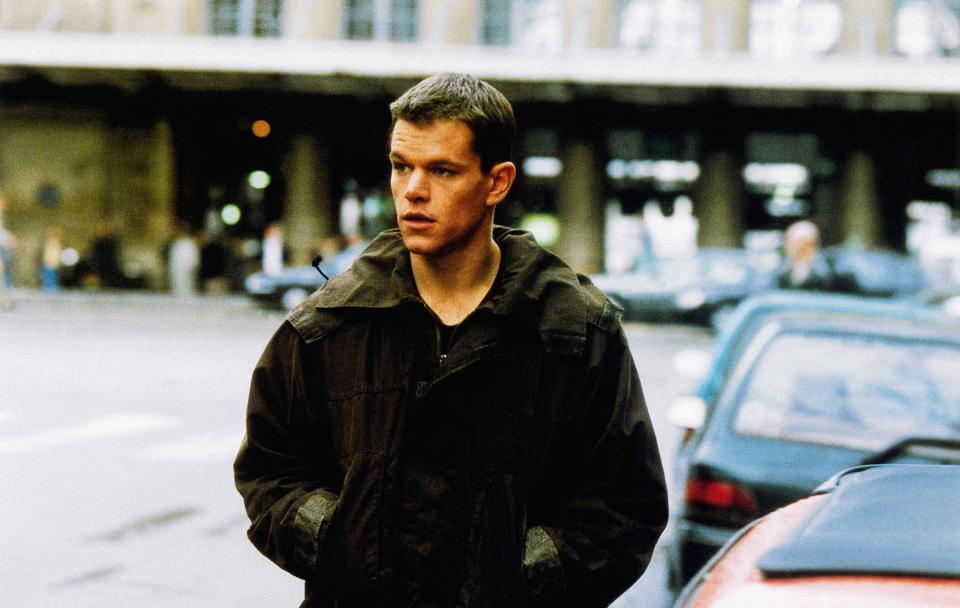
THE BOURNE IDENTITY, MATT DAMON, 2002, © UNIVERSAL
Finally, don’t forget the Bourne movies. An American in Europe if ever there was one.
And then lastly, for real: Please check out Barcelona Days. If you, like I, love any of the above, I think you will very much enjoy this book, too.
Daniel Riley is a GQ correspondent. Barcelona Days is out today, June 23.
Originally Appeared on GQ

